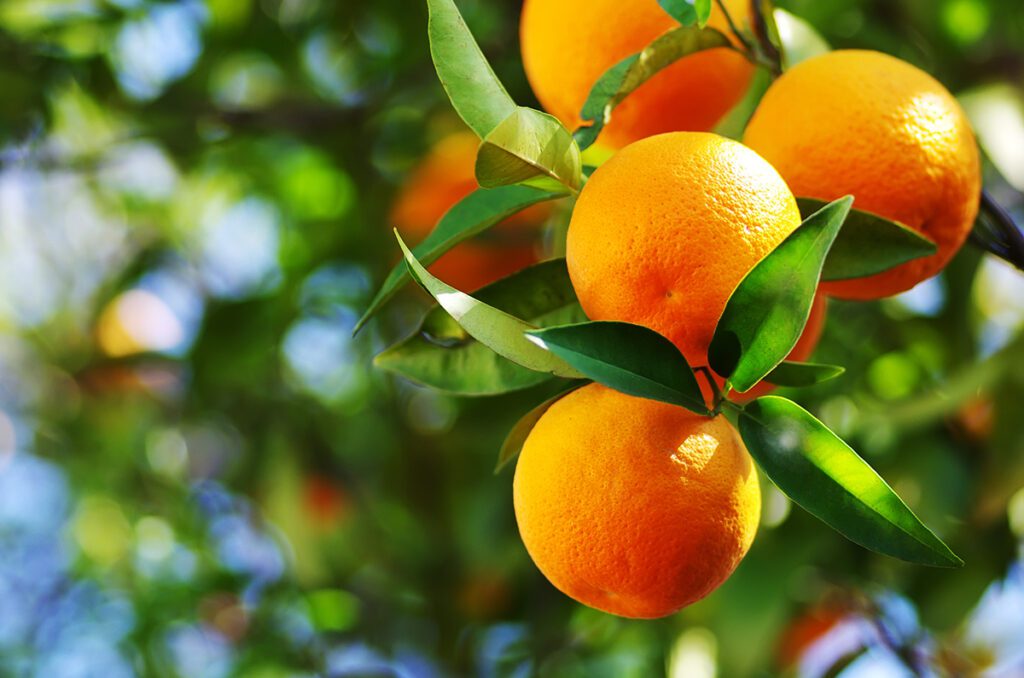Sponsored by Farm Credit of Central Florida
by ERIKA ALDRICH
Citrus is one of the oldest agriculture industries in The Sunshine State, with citrus being introduced to the state in the 1500s by Spanish explorers. To this day, citrus and the state of Florida are synonymous as oranges and other citrus are the first produce to come to mind when Florida is mentioned. Despite the devastating impact of citrus greening, citrus is still the leading commodity in Florida.
Florida’s Citrus History
Commercial cultivation of citrus in Florida can be traced back to the early 1800s with orange groves in the north and grapefruit groves around the Tampa Bay area selling their produce. The industry continued to grow throughout the years.
Florida had long been the leading producer of citrus in the country—and nearly the world—until citrus greening hit in 2005. Since being detected in a South Florida grove, Florida’s citrus production has been affected by citrus greening, or Huanglongbing, every year since.
According to the Florida Department of Agricultural and Consumer Services (FDACS), in the 2016-2017 season, Florida’s 78.1 million boxes harvested accounted for 45 percent of the U.S.’s total citrus production. To put the full impact that citrus greening has had into perspective, many pre-citrus greening harvests reached well over 200 million boxes, and the latest USDA Florida Citrus Forecast from June 2020 predicted Florida citrus growers would harvest 67.65 million boxes of citrus this season.
Despite the challenges presented by citrus greening and additional diseases, pests, and other issues, Florida citrus growers remain resolute that Florida’s citrus industry will prevail.
Economic Impact of Florida Citrus
The total production value of oranges in 2017 was $1.07 billion with grapefruit adding $136 million in total production value, according to FDACS. According to Florida Citrus Mutual (FCM), a “voluntary cooperative association dedicated to helping Florida citrus growers produce and market their crop,” the 2018-2019 citrus season produced 77.3 million boxes of fruit on 430,000 acres. That crop had a preliminary on-tree value of approximately $873 million. FCM maintains that “Preliminary value is based on the part of the crop priced at harvest, which accounts for all of the fresh fruit, and about 40 percent of processed fruit.”
Citrus production may have been on the decline in Florida for the past several years, but it is still the leading ag commodity in the state. According to FDACS numbers, the 2017 farm cash receipt value of Florida citrus was $1.03 billion, which was 13.8 percent of the state’s totals.
About 90 percent of the 2018-2019 citrus crop was oranges for processing—mainly into juice, but also for oils, fragrances, flavorings, and animal feed—while the remaining 10 percent was citrus slated for the fresh fruit market.
While production is down in the Florida citrus industry, it still has a major impact on the economy of The Sunshine State. According to FCM, citrus’s impact on Florida’s economy totals approximately $8.5 billion a year. The citrus industry generates around 45,000 full-time and part-time jobs in Florida, with both direct and indirect jobs, from citrus grove owner to the packing, processing, and transporting side of the industry, contributing to Florida’s job market.
Florida citrus has a rich history and deep roots in the state. Despite the challenges of citrus greening and more, the Florida citrus industry continues the good fight through significant on-going research that has brought together Florida citrus growers, Extension agents, leading scientists and researchers, and state officials to work towards an even brighter future.


